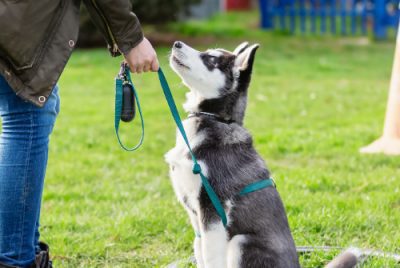Dealing with Separation Anxiety in Dogs
Post Disclaimer
We may earn a commission for purchases made using our links. Please see our Disclaimer to learn more.
Tips, for Easing Separation Anxiety in Dogs
Dogs are known for their loyalty and love towards their owners. However, there are instances when leaving them alone at home can trigger separation anxiety. This is an issue faced by dog owners and can cause stress for both the pet and the owner if not handled properly. Separation anxiety is not a onetime occurrence but rather a behavioral problem that requires attention. In this blog post we will explore everything you need to know about separation anxiety in dogs. From understanding its causes to identifying signs of anxiety in your companion. We will also discuss considerations and effective strategies, including behavior modification techniques. Seeking professional help to address moderate to severe cases of dog separation anxiety. By following our advice, you can help alleviate your pet’s separation anxiety and create a comfortable environment, for them when they are left alone.
Understanding Separation Anxiety in Dogs
Separation anxiety in dogs is a serious problem that can cause destructive behavior when left alone. Helping dogs cope requires understanding their stress signs, such as signs of stress, and identifying the cause. A dog trainer or certified applied animal behaviorist can provide the best solution to this issue. Storm phobias and extreme stress should be recognized early, and help sought without delay to avoid more severe conditions.
Understanding the Issue: What is Separation Anxiety?
When dogs are left alone, they can become exhibit behaviors such, as barking and pacing. It’s crucial for pet owners to be able to recognize these signs of anxiety so they can provide support and help their dogs feel more at ease.
The Causes: Why Do Dogs Experience This Anxiety?
Dogs may feel separation anxiety due to trauma and time away from their owners. It’s important to identify the triggers and causes for effective treatment. Paying attention to your dog’s behavior can help pinpoint specific causes of anxiety.
Detecting Signs of Separation Anxiety
Pet parents need to know the signs of separation anxiety to prevent more distress. Early intervention is key and can be effective. Spotting these signs is important to address this condition in dogs. It’s crucial to understand these signs as they’re not a result of disobedience. Timely and effective treatment is possible with early detection, keeping your furry family member healthy.
Common Symptoms to Watch Out For
Exhibiting destructive behaviors is common in dogs experiencing separation anxiety. Signs include chewing, excessive vocalization, and pacing anxiously. Pet parents must recognize these symptoms to help their dogs. Early identification of these signs can tell apart between anxiety and misbehavior. This leads to effective intervention, especially in severe cases. Consulting a certified animal behaviorist or dog trainer can offer support for managing symptoms and preventing escalation. Timely recognition and intervention can improve the well-being of dogs with separation anxiety.
Differentiating Between Anxiety and Misbehavior
Pet owners must differentiate anxiety from disobedience as it is crucial. Recognizing the difference between them helps in training pets better. This distinction is necessary to address the problem of anxious behavior and disobedience. Identifying this difference can prevent further distress and enable effective intervention. Separation anxiety in dogs can be managed by distinguishing between anxiety and misbehavior.
Medical Considerations in Separation Anxiety
When it comes to separation anxiety, in dogs it is crucial to consider factors. This is important because if left unaddressed the condition can result in behaviors or signs of stress. It’s possible that dogs may be experiencing a problem such as a urinary tract infection, which might require a different kind of medication. It is advisable to seek the guidance of a veterinarian or an animal behaviorist, for an evaluation to identify and address any health issues that could be influencing your dogs behavior.
Why it’s Important to Rule Out Other Health Issues
To manage separation anxiety in dogs, it’s crucial to rule out other health issues. Identifying and addressing any medical problems is essential before treating anxiety. Medical evaluations help eliminate potential health issues and are significant for successful treatment. Addressing underlying health concerns ensure the well-being of furry family members and managing separation anxiety effectively.
Consulting a Vet: When is it Necessary?
To help dogs with separation anxiety, consulting a vet is crucial. A vet can check if any medical condition causes anxiety. Seeking guidance from a vet behaviorist can also help manage anxiety. Pet parents need to consult a vet if they think their dog has separation anxiety.
Addressing Your Dog’s Separation Anxiety
To manage separation anxiety in dogs, implement a behavior modification plan combined with a holistic approach. You can use things like mental stimulation, crate training, and puzzle toys to help prevent destructive dog behaviors, including destructive behaviors. For severe cases of separation anxiety, consider seeking professional help from certified animal behaviorists or dog trainers. Providing enough physical exercise, including walks and chew toys, is also an effective way to calm your dog’s mind and behavior. In extreme situations of separation anxiety, getting medical help may be the best option for your furry friend.
Simple Strategies for Mild Cases
If your dog is dealing with separation anxiety there are some strategies, you can try to help them feel more at ease. One approach is to provide them with a toy filled with treats as this can help keep them occupied and reduce their anxiety when you’re not around. Puzzle toys are also effective, in keeping dogs engaged and minimizing stress. Another helpful method is crate training, which creates a space for your dog to relax while you’re away. Additionally using reinforcement techniques can teach your dog not to feel anxious when you leave. Leaving an item of clothing with your scent can also provide comfort. Alleviate their stress. By employing these strategies, such, as leaving your dog in a room you can greatly assist dogs experiencing mild separation anxiety.
Exercise and Mental Stimulation: The Role they Play
Regular walks can help reduce separation anxiety in dogs by tiring them out and lessening their stress. Toys and puzzles can provide mental stimulation, keeping dogs occupied and calm. Doggy daycare or hiring a walker can also help alleviate severe separation anxiety. Training sessions and food-based activities can also provide cognitive exercise, preventing destructive behavior associated with separation anxiety. Obedience training is a great way to distract your dog’s brain from the stress of being alone and ensure you have a tired dog.
Working on Addressing Behavior Issues
Using reinforcement techniques can be helpful, in addressing separation anxiety behaviors in dogs. Behavior modification, such as desensitization training can effectively reduce the display of separation anxiety symptoms. Providing a training crate can create a space for dogs and aid in modifying their behavior by alleviating anxiety. Consistently implementing training sessions is crucial for facilitating behavior change and reducing signs of separation anxiety in dogs. Employing behavior modification strategies, like counter conditioning can significantly alleviate separation anxiety behaviors in dogs. Contribute to a positive transformation, in their overall demeanor. Counter conditions are a behavior modification technique in which you pair something that causes a negative emotional response with something known to create a positive response in your dog. Tasty food treats are commonly used to create a positive emotional state.
How to Train Your Dog to Relax?
Teaching your dog to relax when you’re not around is possible. You can do this by gradually increasing the time you’re away from them. Use food rewards to encourage calm behavior and relaxation training sessions. Desensitization training can also help. Close attention like ignoring your dog before and after leaving can help them deal with separation anxiety. If the Problem Is More Serious … – When your dog starts to feel less anxious about that, you can slowly start to disappear. First just go on the other side of the door. Ask your dog to stay, then close an inside door between you. Reappear after a few seconds. Slowly increase the amount of time you’re gone. Put on your shoes and pick up your keys. Ask your dog to stay while you go into another room.
Making Your Dog Feel Less Stressed When You’re Away
If you’re planning to leave your dog for some time, consider giving them treats before you depart. This will help them associate your departure with feelings. Additionally turning on the TV or radio can create a calming environment, for your dog while you’re not around. It’s also important to ensure that your dog has access, to toys or games to keep them entertained and prevent boredom. If needed, you can explore options like using pheromone diffusers or hiring a dog sitter to help relax your friend. Lastly try to avoid creating noise or making a fuss when leaving as it may distress your dog.
Dealing with Moderate to Severe Separation Anxiety
To help your dog cope with being alone, start small and increase gradually. Use a quiet spot like a crate or room. Remove any stress triggers. Give plenty of exercise and challenges to ease anxiety. Get help from an animal expert if needed, such as a behaviorist or trainer.
Seeking Professional Help: When and Why
If your dog is struggling with severe separation anxiety, it’s important to seek professional help. A certified animal behaviorist or trainer, such as a veterinary behaviorist, can provide personalized solutions that address underlying issues like fear or insecurity. They use humane techniques and have success stories with behavior modification. Seeking help is the best way to help your furry family member if their anxiety is causing harm or extreme stress.
Is Medication the Option, for Separation Anxiety in Dogs?
If your dog is struggling with separation anxiety, it’s advisable to consult a veterinarian before considering medication. Before resorting to medication, it’s worth trying changes to address the issue. Some prescribed medications for separation anxiety, in dogs include fluoxetine, clomipramine and alprazolam.
Can Separation Anxiety in Dogs be Fully Cured?
It may not be possible to fully cure separation anxiety in dogs. However, proper management and training can help reduce its severity. By addressing underlying causes, providing a structured routine, and using behavior modification techniques, dogs with separation anxiety can lead a more relaxed life. If you want to ready more about separation anxiety in dogs check out this great article from the American Kennel Club (akc.org)
Conclusion
Separation anxiety in dogs can be hard to deal with, but you can calm them down with the right approach. First, detect the signs and understand the problem. Check with a vet if there are underlying medical problems. Simple strategies like exercise and mental stimulation can help in mild cases. To train your dog to relax, use behavior modification techniques and reduce their stress while you’re gone. In severe cases, consider medication or seek professional help. You may not cure separation anxiety completely, but proper care and support will improve your dog’s life.









